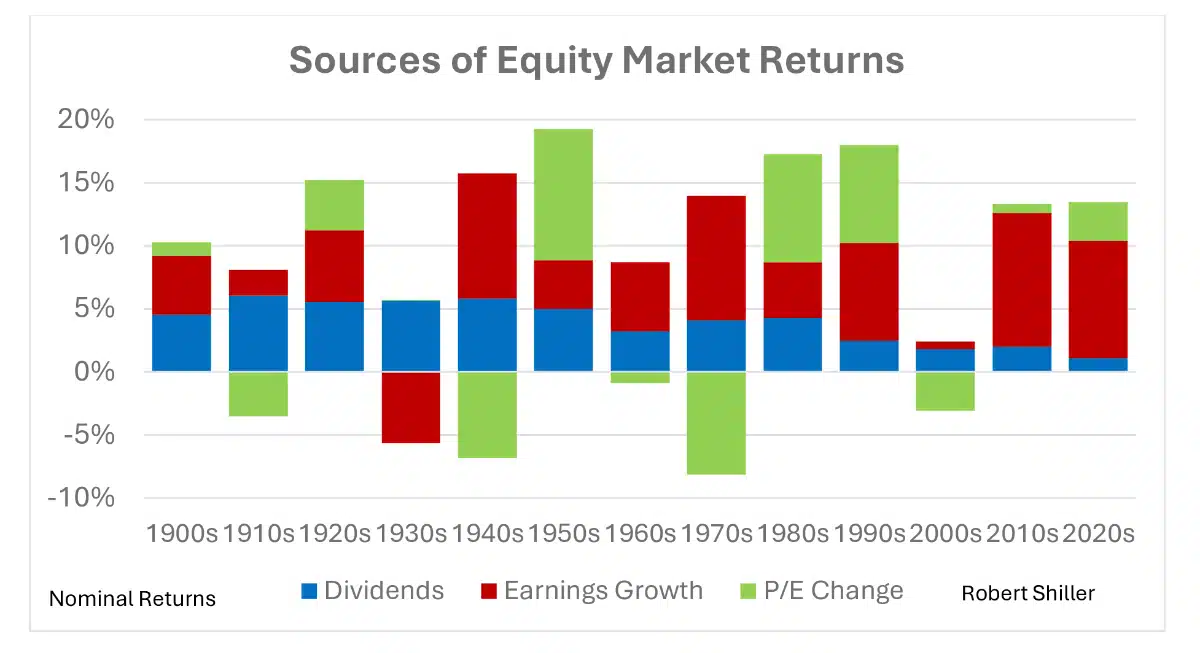
Financial Planning: Preparing for the Rising Costs of Long-Term Care
As the U.S. population continues to age, the demand for long-term healthcare is expected to rise steadily.

What has driven equity market performance in the past? About 40-50% of returns have come from Dividends historically, although in recent decades that proportion has shrunk substantially. Earnings Growth has been a consistent driver of returns, and especially large over the last 15 years. Then, there is P/E Change, a measure of how bullish investors are because it is driven by how much investors are willing to pay for stocks today based upon their assessment of their future performance. P/E Change since 1900 has contributed only about 1% to equity market returns, but over the past five decades, it has contributed about 3.4% or 28% of the return of the S&P 500.

Over time the reinvestment of dividends can make a significant difference in total returns. Over the past 20 years, the market has grown 4.4 times in price terms; with reinvested dividends it has grown 6.5 times. Over 30 years in price terms the market rose 9.8 times, vs. 17.2 times with all dividends reinvested.

Of course, these strong returns require the reinvestment of dividends back into the market. Some investors favor dividend paying stocks because of the income that they generate, but remember that there is no free lunch: the stock price declines by the amount of the dividend to be paid when the stock begins to trade “ex-dividend”. Also be careful not to confuse this analysis of the importance of dividends to market returns with expected returns of high dividend paying stocks vs. those that pay low dividends, or no dividends.

As the U.S. population continues to age, the demand for long-term healthcare is expected to rise steadily.

Alternative investments are evolving fast. Discover how IAG’s partnership with KraneShares enhances portfolios with strategic, evidence-based diversification.

As we gather with loved ones this Thanksgiving, it’s a perfect moment to reflect on gratitude, generosity, and the IMPACT we can make.

In October, the Federal Reserve cut its benchmark rate (the fed funds rate) by a quarter-percentage point to 4.00–4.25%.